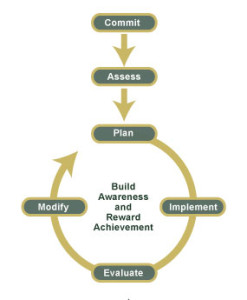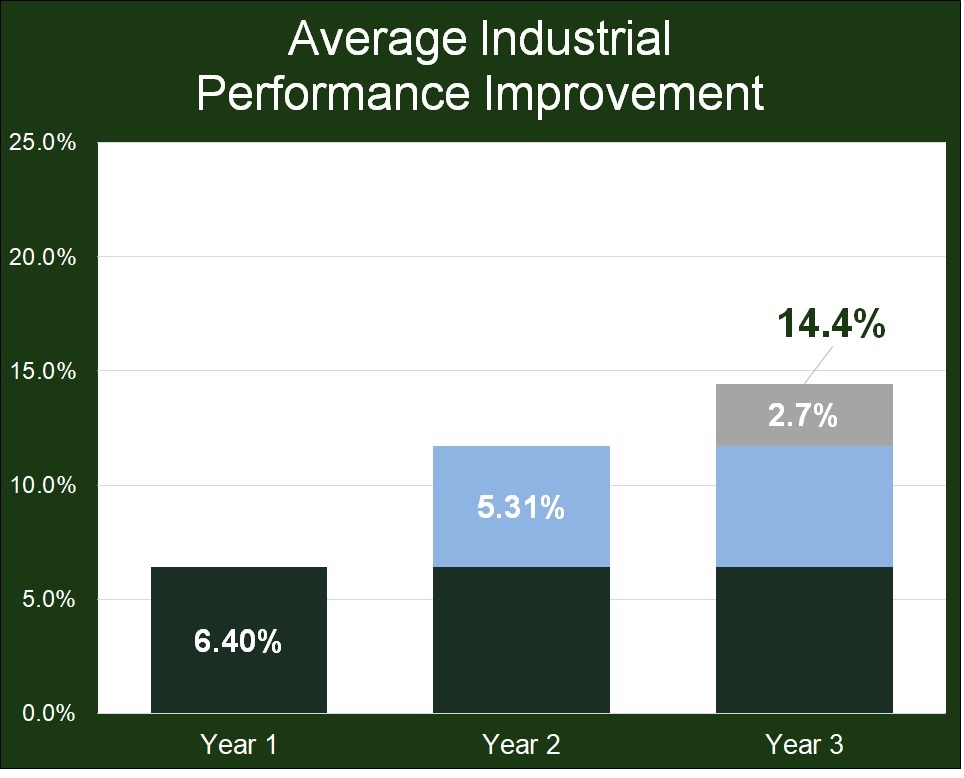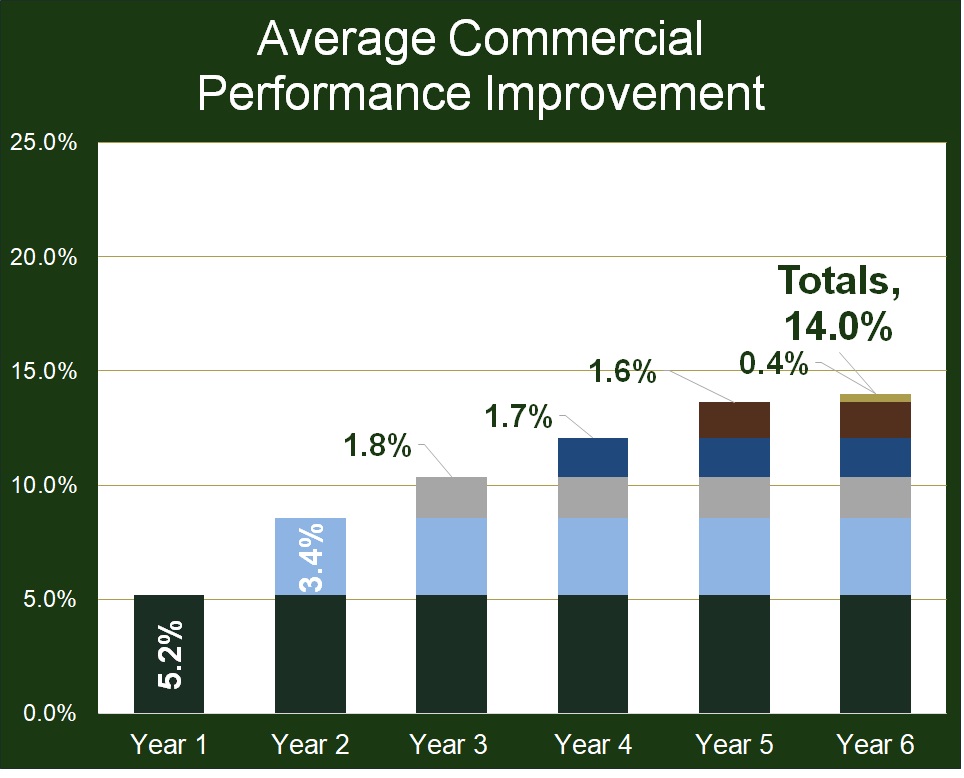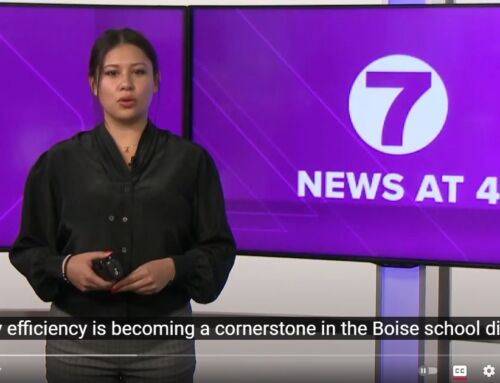Abstract
Utilities have increasingly turned to Strategic Energy Management (SEM) programs over the past ten years to drive savings and engage customers more deeply. Some utility SEM programs, as well as organizations pursuing SEM independently, are pursuing longer interventions in search of increasing and more persistent savings.
Maintaining and growing SEM within mature organizations requires
Excerpt from Paper
A relatively new approach to energy efficiency, SEM has established itself as a reliable resource acquisition program for utilities addressing medium to large industrial and commercial customers over the last several years. Articulated in the Consortium for Energy Efficiency’s Strategic Energy Management Minimum Elements, strategic energy management provides a means for senior managers and staff to deliberately manage and affect energy usage through operational and behavioral change.
The figure at right shows the results of multi-year engagements from the industrial sector. 
Commercial market activity is significantly higher and performance includes more sites over more years. The figure at left shows the 6 year average performance improvement from baseline. The data shows overall average performance increases for commercial sites year-over-year, with the average site performance improving 14.0 percent after six years.
Delivered typically as a twelve to twenty-four-month intervention with end-user customers, a growing consensus of resource acquisition program managers see value in establishing longer SEM intervention engagements of three, four, or five years and sometimes longer. Seen through the lens of program managers, longer engagement periods should provide stronger customer relationships and deeper and more persistent energy savings and the results support this.
Participants in SEM programs are also significantly more likely to implement capital projects intended to save energy, which result in greater savings than organizations not participating in SEM. By establishing savings goals, monitoring progress toward those goals and re-evaluating these goals, an internal drive to achieve continued savings provides an impetus for more projects. Having a data-driven approach to managing energy costs as well as the knowledge and tools to verify performance increases the likelihood of projects attaining their intended results.





